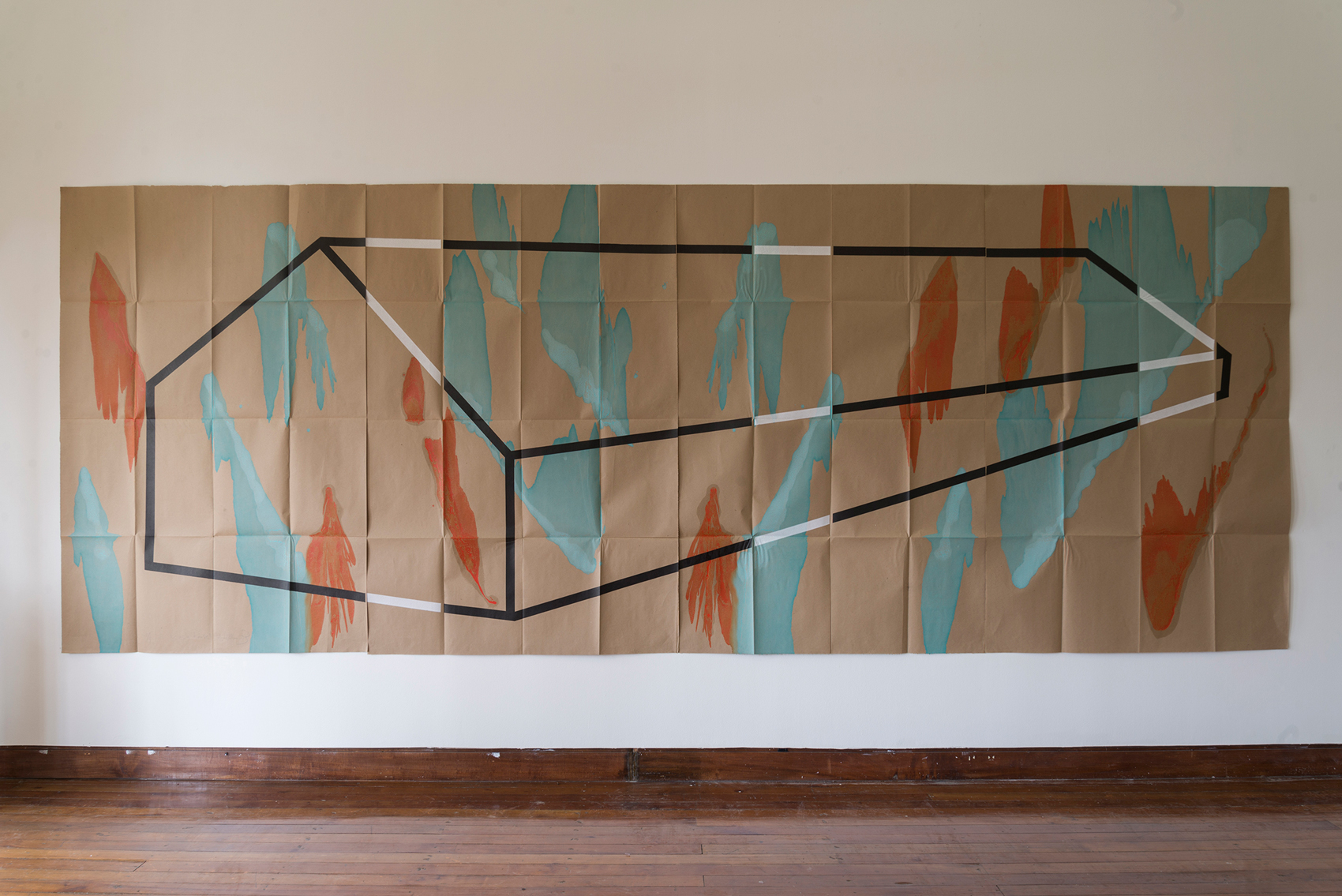Chapter Eight
Fold
Eugenio Dittborn, one of the most internationally renowned Chilean contemporary artists, was born in 1943 in Santiago de Chile. After studying painting and engraving, he travelled to Europe to study photosetting, lithography and painting and returned to Chile in 1972, shortly before the 1973 Military Coup, after which the way art was made and thought about, changed dramatically.
The situation and political context in the country encouraged artistic manifestations to look for new mechanisms or means of expression that camouflaged what artists wished to express, as well as displacing or transforming symbols, signifiers and meanings. This urgent need, along with a new writing in art, reinforced in 1977 the intersection between art and theory to gestate and conceptualize a new art movement: The Advanced Scene.
Within and from this movement was the point from which Dittborn’s practice and visuality moved, looking for his main sources and manifestations in the new avant-garde and through broader experimentation.
in 1977 the intersection between art and theory to gestate and conceptualize a new art movement: The Advanced Scene
A variety of elements and trends, including the French artist and father of the Ready-Made, Marcel Duchamp, with his concept of the “found object”, greatly influenced the artist. Dittborn found that objects from various sources of popular culture and merged them with his peculiar way of working; using processes and methodologies to intervene in the pieces, never using the hand directly on them. Rapidographs, set squares, rulers, and also photographs, engravings and tints, among others, were combined taking advantage of the discussions around the classic ways of creating, where each artistic technique takes on a new meaning.
From here, the step towards certain acts of indomitability was something evident, taking shape in his famous “Aeropostals”, officially created in 1984, and possibly Eugenio Dittborn’s most characteristic works. The aeropostal paintings defy art protocols from the institutional as well as from the formal perspective, first as sent parcels, displayed as works only upon arrival, and also through the irreverence towards the orthodox and impeccable ways of exhibition, where his methodology included an element that didn’t serve those conventions: the folding and refolding of the actual works.
In addition to the “Aeropostales” (Aeropostals), which include many and diverse individual pieces that travel by airmail, made since the 1980s, Eugenio Dittborn also works with video-art, making "Lo que vimos en la cumbre del Corona" (What we saw at the summit of the Corona) (1982-2008), "5 bocetos preparatorios para la historia de la música" (5 preparatory sketches for the history of music) (1983-2008), "La historia de la física" (The history of physics) (1982-2008) and "El Crusoe” (The Crusoe) (1990-2008).
“Pietá”, from 1983, is a photo-based piece of the image of a falling boxer captured from the television. “Cambio de Aceite” (Oil Change), was a performance-based piece that consisted in the spilling of 350 liters of burnt oil in the Tarapacá Desert, made and recorded in 1981.
An example of Dittborn’s inclusion of popular culture and the displacement and condensation in something already given, is the series “DELACHILENAPINTURA, HISTORIA” (OFTHECHILEANPAINTING, HISTORY) (1975-1976), in which portraits of national stereotypes incarnate several characters of the Chilean painting.
The spot, the trace, the pittance, the repetition, the weave, and high and low culture agitate in Dittborn’s work from a precariousness that developed into a brilliant strategy for creation. Controlled fate seems to be fundamental in Eugenio Dittborn’s process, thought and strategy, where variations are governed by rules rigorously accounted for with algorithmic principles, determining parameters for their unique visuality.
Controlled fate seems to be fundamental in his process, where variations are governed by rules rigorously accounted for with algorithmic principles
Images courtesy of Galería Macchina — Photos by Benjamín Matte








